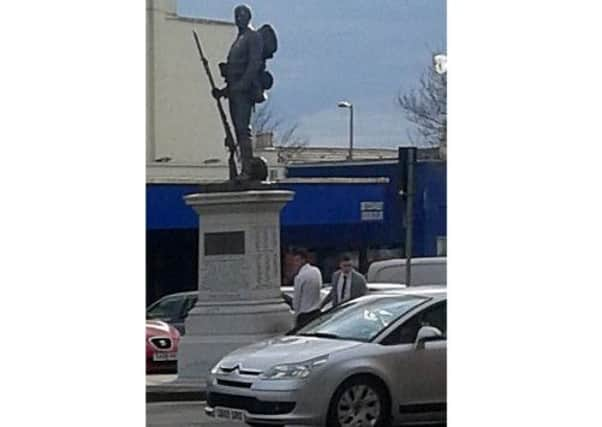Police hunt after ‘disrespectful’ act on Ayr war memorial


The man apparently urinated on the statue in Burns Statue Square, Ayr, dedicated to fallen soldiers from the Royal Scots Fusiliers. The incident took place last Saturday, when Ayr Racecourse hosted the Scottish Grand National.
One onlooker, who did not wish to be named, took this photograph just after 6pm.
Advertisement
Hide AdAdvertisement
Hide AdHe said: “I couldn’t believe it. It’s incredibly insulting to the ex-servicemen who fought for the country.
“I had been to the races and was heading to the train station when I saw the man urinating against the war memorial.
“I got my phone out and took the picture.
“It was loutish behaviour and the fact that it was next to the train station and a busy bus stop made it even worse. There were ladies and children waiting for buses and the memorial is right next to a cinema.
“I know people can sometimes get caught short coming home from the pub, but there were plenty of pubs and bookies nearby where he could have used the toilet.”
A spokeswoman for Poppy-scotland said: “We are extremely saddened to hear about this disgraceful and disrespectful act. War memorials honour the memory of those who died for our freedom and we believe they should be treated with the utmost respect.”
A spokeswoman for Police Scotland added: “We have forwarded the picture on to the relevant department to progress as appropriate.”
Sandra Osborne, the Labour MP for Ayr, Carrick and Cumnock, condemned the act as “despicable”.
John Hamilton, secretary of the Royal Scots Fusiliers Old Comrades Association Ayr branch, said yesterday he was “disgusted” by the incident.
The bronze statue was created by English sculptor Sir Thomas Brock in 1902.